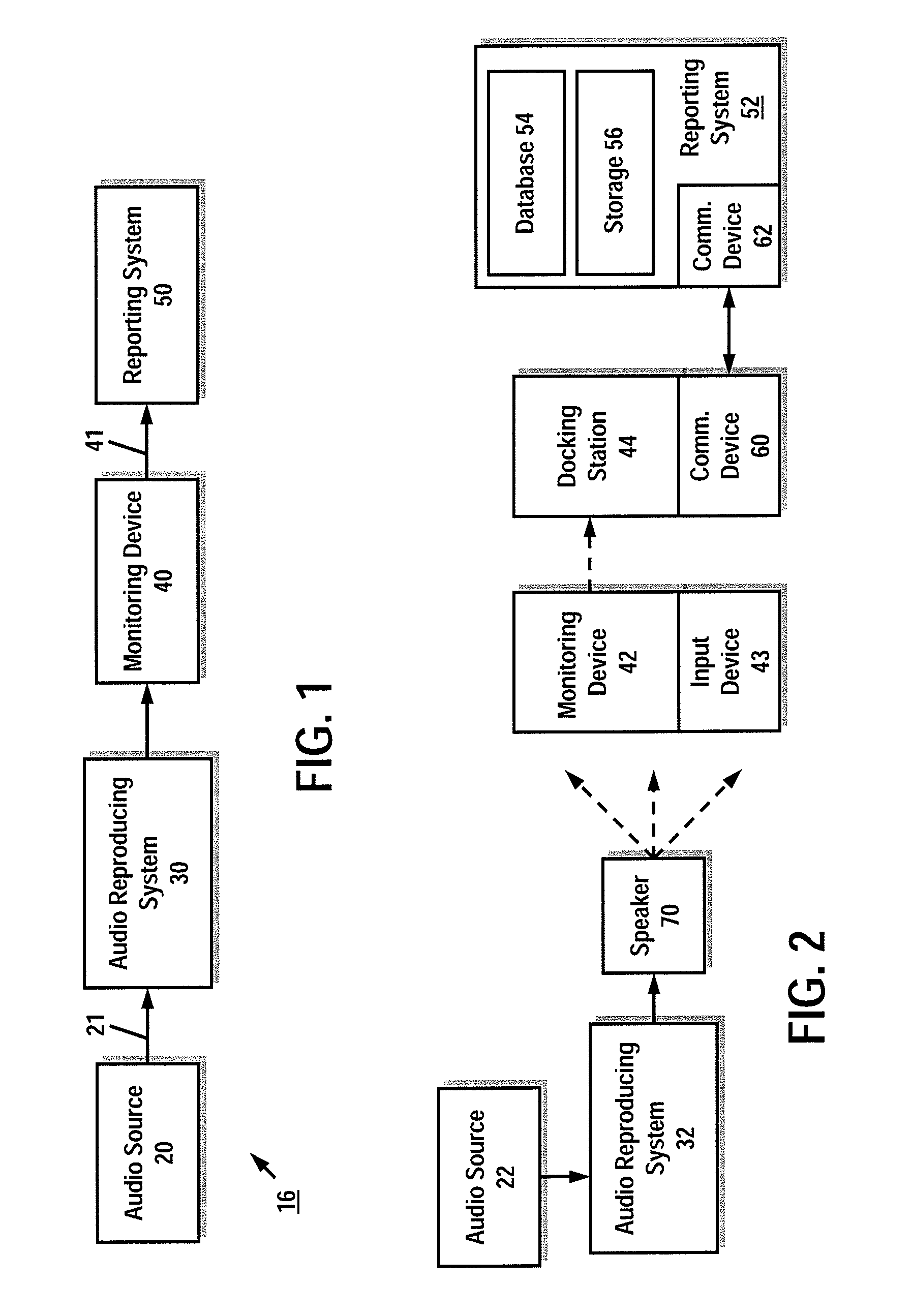The emergence of multiple, overlapping media distribution pathways, as well as the wide variety of available user systems (e.g. PC's, PDA's, portable CD players, Internet, appliances, TV, radio, etc.) for receiving audio data and other types of data, has greatly complicated the task of measuring audience
receipt of, and
exposure to, individual program segments.
However, one
disadvantage of using such
pattern matching techniques is that, because there is no predetermined point in the program
signal from which signature extraction is designated to begin, each program
signal must continually undergo signature extraction, and each of these many successive signatures extracted from a single program
signal must be compared to each of the reference signatures in the
database.
This, of course, requires a tremendous amount of
data processing, which, due to the ever increasing methods and amounts of audio
data transmission, is becoming more and more economically impractical.
One
disadvantage of this technique, however, is that the presence of a code that triggers the extraction of a signature from, a portion of the signal before or after the portion of the signal that has been encoded necessarily limits the amount of information that can be obtained for producing the signature, as the encoded portion itself may contain information useful for producing the signature, and moreover, may contain information required to measure the values of certain features, such as changes of certain properties or ratios over time, which might not be accurately measured when temporal segment of the signal (i.e. the encoded portion) cannot be used.
Another
disadvantage of this technique is that, because the trigger code is of
short duration, the likelihood of its detection is reduced.
One disadvantage of such short codes is the diminished probability of detection that may result when a signal is distorted or obscured, as is the case when program signals are broadcast in a acoustic environments.
In such environments, which often contain significant amounts of
noise, the trigger code will often be overwhelmed by
noise, and thus, not be detected.
Yet another specific disadvantage of such short codes is the diminished probability of detection that may result when certain portions of a signal unrecoverable, such as when burst errors occur during, transmission or
reproduction of encoded audio signals.
Burst errors may appear as temporally contiguous segments of signal error.
Such errors generally are unpredictable and substantially affect the content of an encoded
audio signal.
Burst errors typically arise from failure in a
transmission channel or
reproduction device due to external interferences, as overlapping of signals from different transmission channels, an occurrence of
system power spikes, an interruption in normal operations, an introduction of
noise contamination (intentionally or otherwise), and the like.
In a
transmission system such circumstances may cause a portion of the transmitted encoded audio signals to be entirely unreceivable or significantly altered.
Absent
retransmission of the encoded
audio signal, the affected portion of the encoded audio may be wholly unrecoverable, while in other instances, alterations to the encoded
audio signal may render the embedded information signal undetectable.
In systems for acoustically reproducing audio signals recorded on media, a variety of factors may cause burst errors in the reproduced acoustic signal.
Commonly, an irregularity in the
recording media, caused by damage, obstruction, or wear, results in certain portions of recorded audio signals being irreproducible or significantly altered upon
reproduction.
Also, misalignment of, or interference with, the recording or reproducing mechanism relative to the recording medium can cause burst-type errors during an acoustic reproduction of recorded audio signals.
Further, the acoustic limitations of a speaker as well as the acoustic characteristics of the listening environment may result in spatial irregularities in the distribution of
acoustic energy.
Such irregularities may cause burst errors to occur in received acoustic signals, interfering with
recovery of the trigger code.
A further disadvantage this technique is that reproduction of a signal, short-lived code that triggers signature extraction does not reflect the
receipt of a signal by at audience member who was exposed to part, or even most, of the signal if the audience member was not present at the precise point at which the portion of the signal containing the trigger code was broadcast.
Yet another disadvantage of this technique is that a single code of
short duration that triggers signature extraction does not provide any data reflecting the amount of time for which an audience member was exposed to the audio data.
Still another disadvantage of this technique is that is single code that triggers signature extraction cannot mark “beginning” and “end” portions of a
program segment, which may be desired, for example, to determine the time boundaries of the segment.
 Login to View More
Login to View More  Login to View More
Login to View More 


